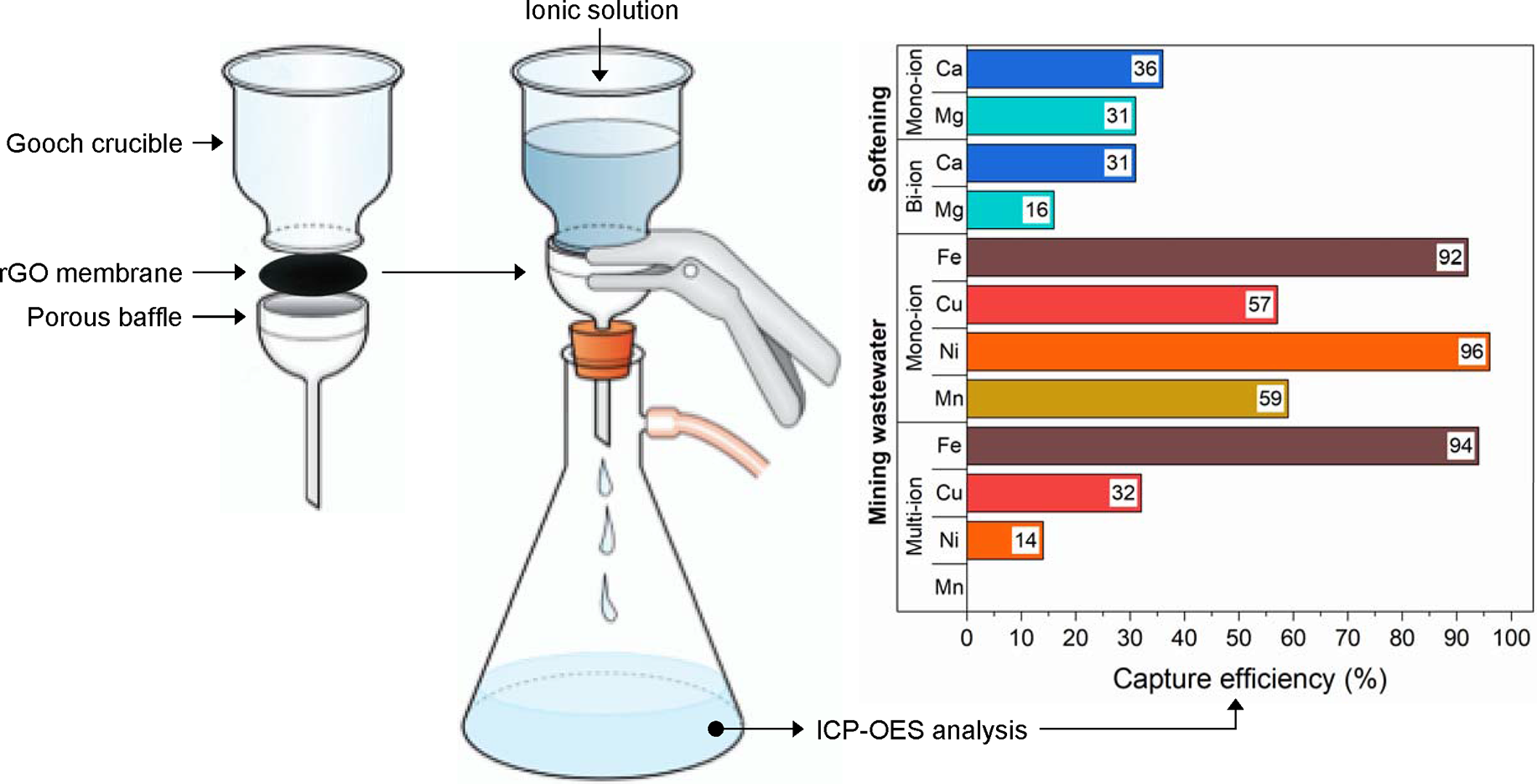S. Latorrata, C. Cristiani, A. Basso Peressut, L. Brambilla, M. Bellotto, G. Dotelli, E. Finocchio, P. Gallo Stampino, G. Ramis
Minerals, 11(1) (2021), 1-16
https://doi.org/10.3390/min11010015
This work focuses on the investigation of the capability of reduced graphene oxide (rGO) filters to remove metals from various wastewater. The process to produce rGO membranes is reported and discussed, as well as their ability to capture ions in complex solutions, such as tap or industrial wastewater. Multi-ion solutions, containing Cu2+, Fe3+, Ni2+, and Mn2+ to simulate mine wastewater, or Ca2+ and Mg2+ to mimic drinkable water, were used as models. In mono-ionic solutions, the best capture efficiency values were proved for Ca2+, Fe3+, and Ni2+ ions, while a matrix effect was found for multi-ion solutions. However, interesting capture efficiencies were measured in the range of 30–90%, depending on the specific ion, for both single and multi-ion solutions. An attempt is proposed to correlate ions capture efficiency with ions characteristics, such as ionic radius or charge. Combining a satisfactory capture efficiency with low costs and ease of treatment unit operations, the approach here proposed is considered promising to replace other more complex and expensive filtration techniques.

